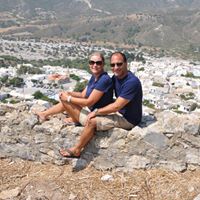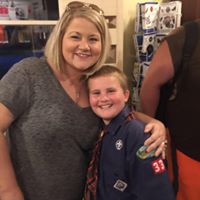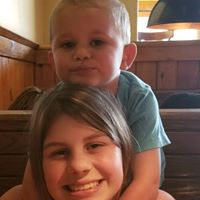Renee S Weber
age ~67
from Pierz, MN
Renee Weber Phones & Addresses
- 13119 Watercott Ln, Pierz, MN 56364 • (320)4686857
- El Mirage, AZ
- Hilliard, FL
Isbn (Books And Publications)

Children's Authors and Illustrators: A Guide to Manuscript Collections in United States Research Libraries
view sourceAuthor
Renee I. Weber
ISBN #
0896649504

Dialogues With Scientists and Sages: The Search for Unity
view sourceAuthor
Renee Weber
ISBN #
0140192638

Dialogues With Scientists and Sages: The Search for Unity
view sourceAuthor
Renee Weber
ISBN #
0710206550
Resumes

Renee Weber
view source
Renee Weber
view sourceWork:
Xerographic Supply

Phlebotamist
view sourceWork:
Phlebotamist

Renee Weber
view source
Renee Weber
view source
Renee Weber
view source
Operations Manager
view sourceWork:
Operations Manager
Youtube
Flickr
Googleplus

Renee Weber

Renee Weber

Renee Weber

Renee Weber
Myspace
News

The $93-billion plan to put astronauts back on the Moon
view source- Like many space enthusiasts around the world, Renee Weber, a planetary scientist at NASAs Marshall Space Flight Center in Huntsville, Alabama, stared in awe at the webcast feed. That thing is going to the Moon, she thought.
- Date: May 11, 2022
- Category: Science
- Source: Google

Earth's moon is shrinking and quaking, study says
view source- "Establishing a new network of seismometers on the lunar surface should be a priority for human exploration of the Moon, both to learn more about the Moon's interior and to determine how much of a hazard moonquakes present," said Renee Weber, study co-author and planetary seismologist at NASA's Mars
- Date: May 14, 2019
- Category: Science
- Source: Google

Shrinking moon may be generating moonquakes
view source- Additionally, "Establishing a new network of seismometers on the lunar surface should be a priority for human exploration of the Moon, both to learn more about the Moon's interior and to determine how much of a hazard moonquakes present," said co-author Renee Weber, a planetary seismologist at NASA
- Date: May 13, 2019
- Category: Science
- Source: Google

The moon is quaking as it shrinks
view source- The research paper, "Shallow seismic activity and young thrust faults on the Moon," Thomas Watters, Renee Weber, Geoffrey Collins, Ian Howley, Nicholas Schmerr and Catherine Johnson, was published in the journal Nature Geoscience on May 13, 2019.
- Date: May 13, 2019
- Category: Science
- Source: Google

Mars Quakes Set to Reveal Tantalizing Clues to Planet's Early Years
view source- rument will nestle beneath a protective wind shield as its three delicate pendulums measure the tiniest of tremors. It is pretty much the most sensitive seismometer thats ever been built, says Renee Weber, a planetary scientist at NASAs Marshall Space Flight Center in Huntsville, Alabama.
- Date: Apr 28, 2018
- Category: Science
- Source: Google

Renee Weber
view source
Renee Weber Papavasiliou
view source
Tina Renee Weber Lg
view source
Reilly Renee Weber
view source
Tasha Renee Weber
view source
Renee Weber Poulsen
view source
Renee Joyce Weber
view source
Renee Becker Weber
view sourceClassmates

Renee Renee Weber (Weber)
view sourceSchools:
Centennial Elementary School Denver CO 1991-2004
Community:
Pennee Baker, Julian Cordova, Robyn Schultz, Jennifer Lindholm

Renee Weber (Rios)
view sourceSchools:
Dupont High School Hermitage TN 1975-1979
Community:
Jackie Lee, Bobby Stewart

Renee Woodard (Weber)
view sourceSchools:
East Bethel Community High School East Bethel MN 1966-1970
Community:
Joshua Jones, Chloe Trivelpiece, Jeana Marvin, James Smith, Guan Dean, Amber Hayes

Renee Weber
view sourceSchools:
McLurg High School Wilkie Afghanistan 1977-1981
Community:
Perry Huber, Kathy Leidl, Sally Smith, Diane Sieben, Grant Fulton, Luciana Mathews, Diane Weber, Troy Davidson, Michael Adams, Robert Rankeillor, Rick Bachman, Trevor Bachman

Renee Weber (Moore)
view sourceSchools:
Triton High School Erwin NC 1989-1993
Community:
Chasity Pierce, Anndrea Lytch, Shannon Best, Crystal Morrison, Amy Council, Tyrone Bethea, Kail Malloy, Mike Smith, Greg Ray, Tonya Wilson, Jennifer Cockerham

Renee Weber, Marshfield H...
view source
Renee Weber, Taos High Sc...
view source
Renee Weber | Don Bosco H...
view sourceGet Report for Renee S Weber from Pierz, MN, age ~67



















